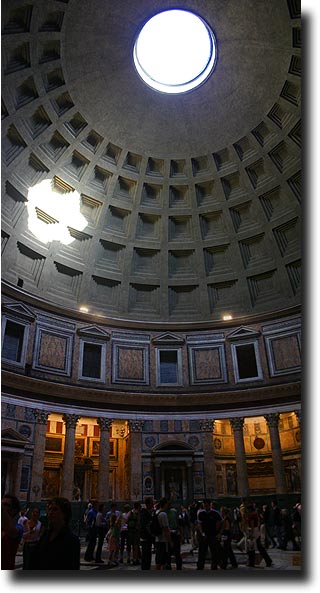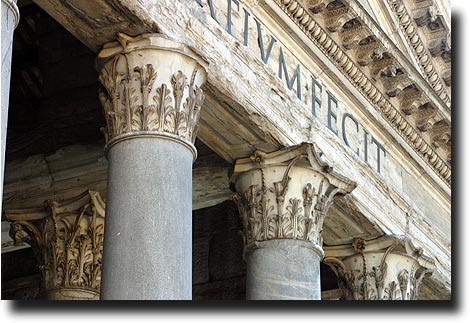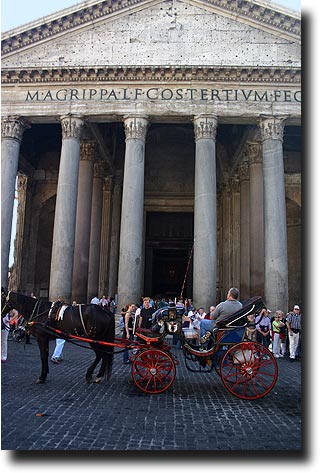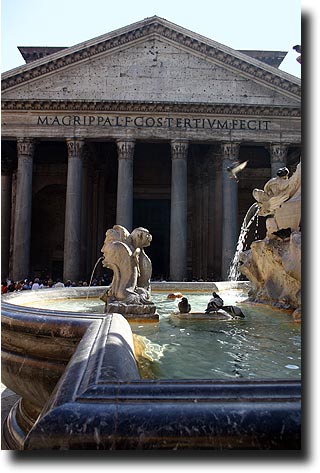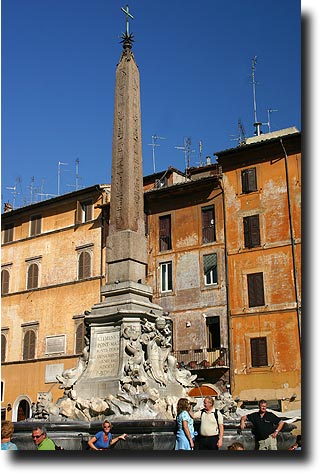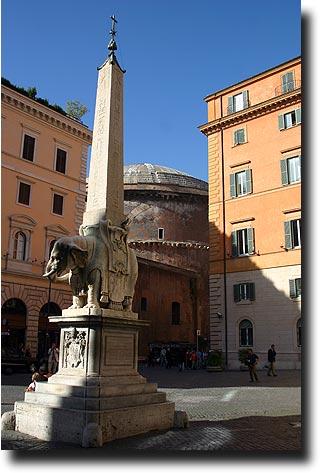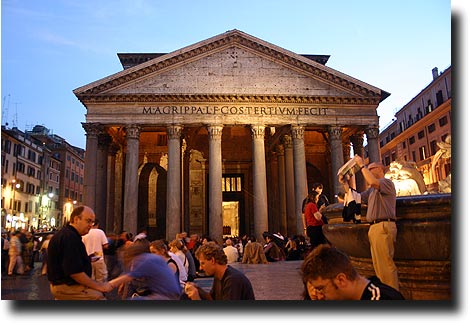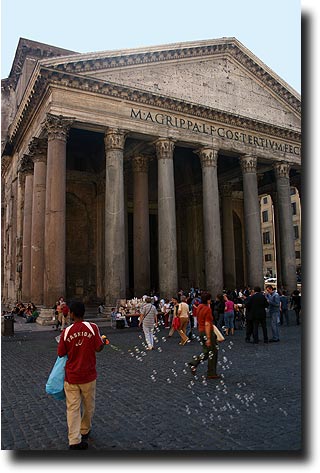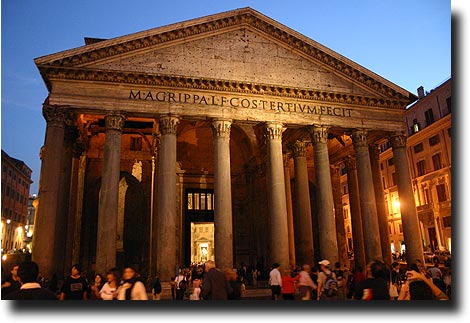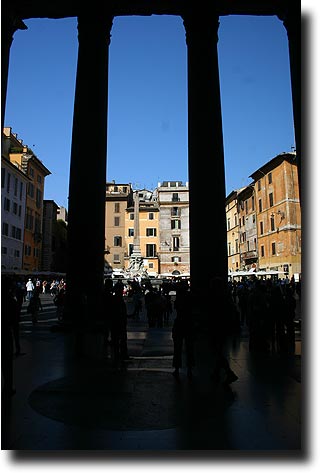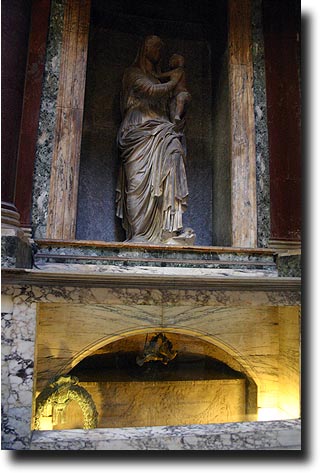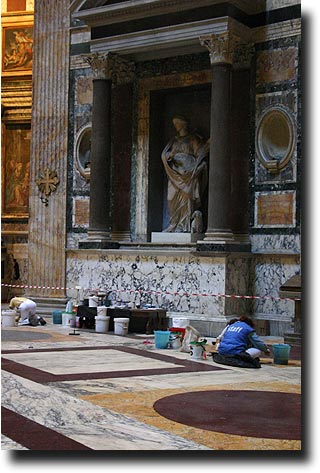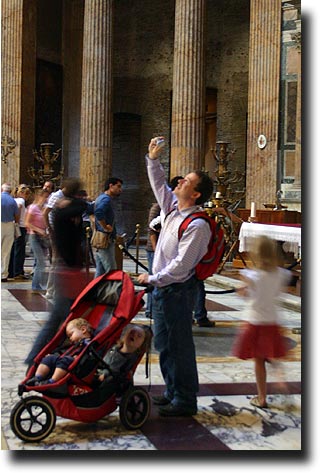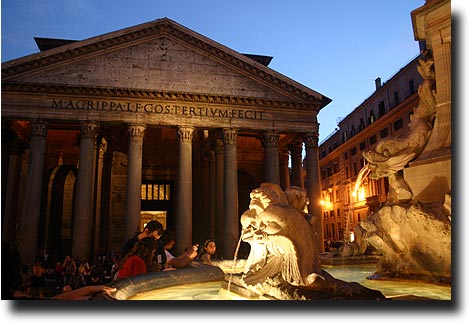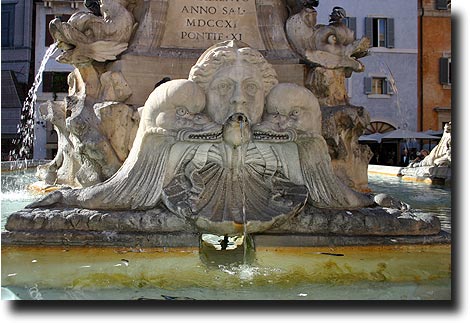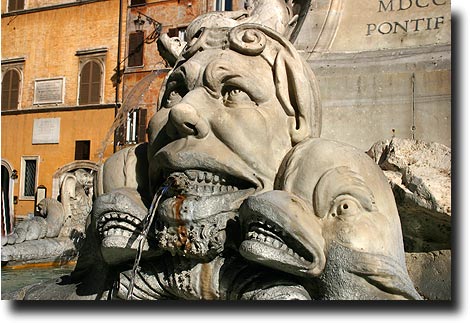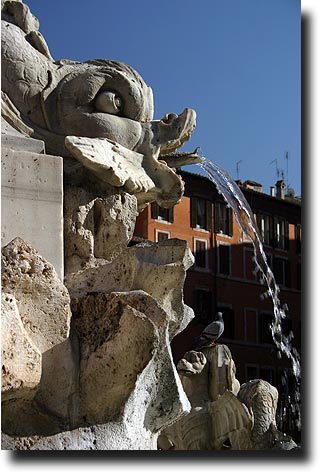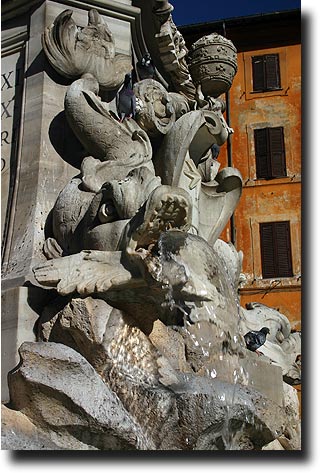|
Entering the huge bronze front doors
- they are still the originals! - you get a sense of the sheer size of
the place. It is built either as a cube or a sphere, depending on how you
look at it; the height equals the length and the width. The only source
of light in ancient times (and during the days now) is from the oculus,
the round hole at the top of the dome. The opening also creates an updraft
of sorts, as wind whisking over it 'sucks' out the interior air and constantly
draws more in from the doors. An open roof does, of course, have the unfortunate
effect of letting in whatever precipitation might be passing through, but
that was apparently an acceptable discomfort to endure.
|
|
Inside there used to be statues of
the gods, but they have all since long disappeared. The building was converted
to a Christian church in the 600s, which probably saved it from being destroyed,
but that didn't save its marble and goldwork from being stripped off. Even
the roof wasn't sacrosanct: the bronze that once sheathed the dome was
ripped out in the early 1600s and used to make cannons and the baldacchino
(a fancy metal frame) over the main altar in St.
Peter's cathedral.
There are remnants and burial places for
various Roman leaders and saints scattered throughout where Jupiter used
to be worshipped. The Madonna below is over the tomb of the artist Raphael.
A section of the marble floors were being painstakingly cleaned during
my visit (below right).
|
|

|
